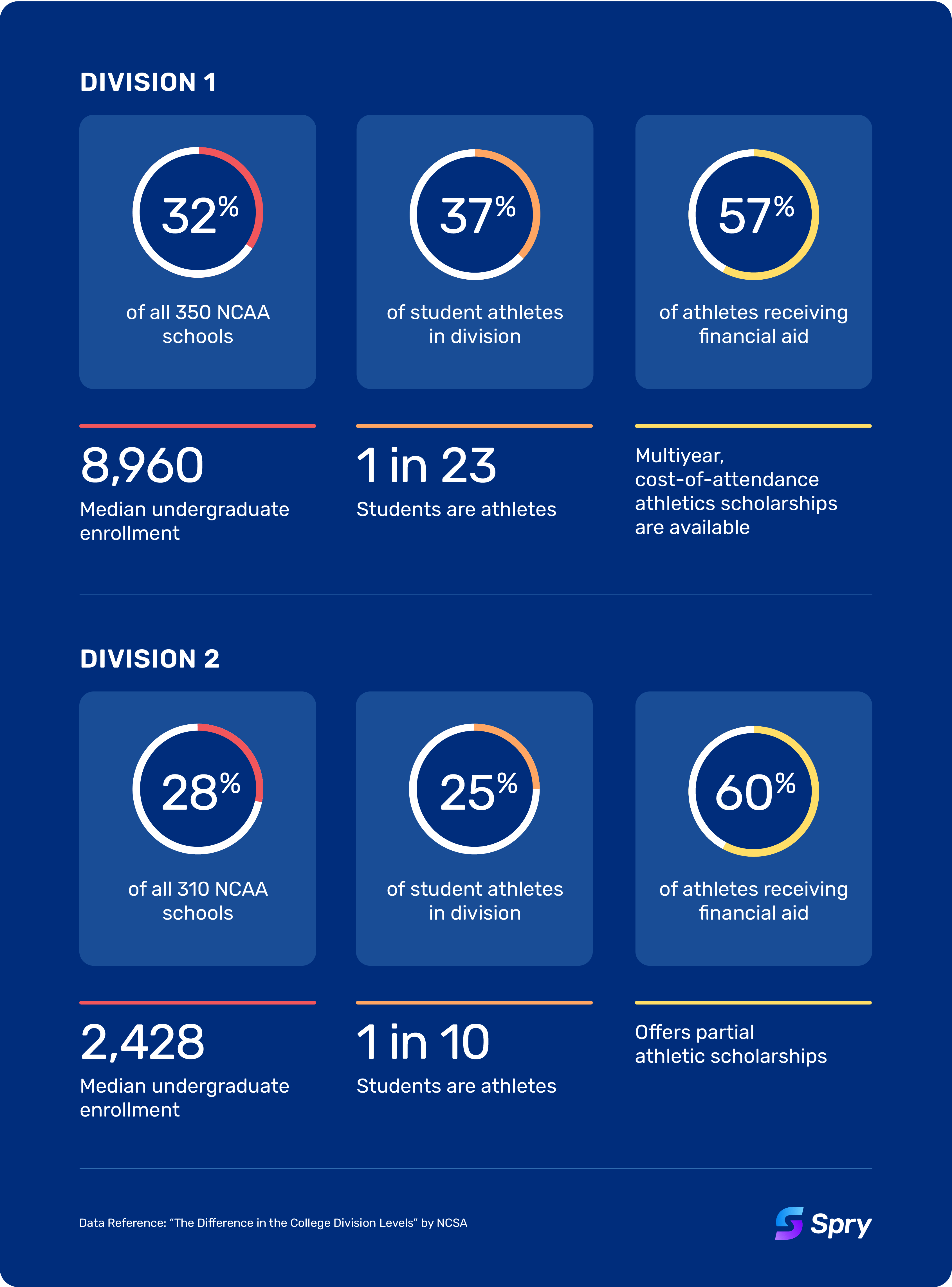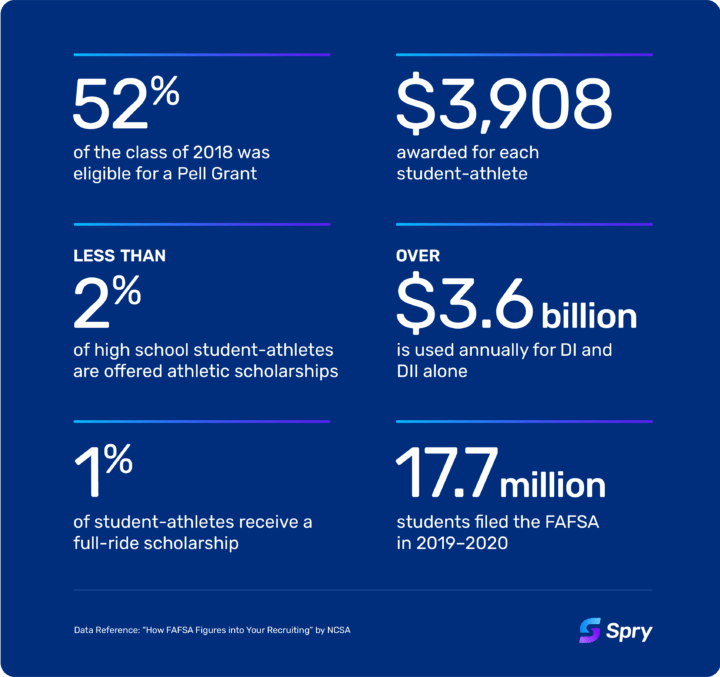Recently Spry co-hosted a panel webinar with NACDA titled “NIL: The Impact on Need Based Aid”. While one of Spry’s own Compliance Advisor, Todd Hairston, was leading the discussion, there were some great questions popping up in the webinar’s chat room. We wanted to share the Q&As with you as a way to keep the NIL conversation going. We are all learning from each other as we navigate this new NIL landscape together! Read on below to see the Q&A and the recording of the panel can be found at the bottom of the article!
Questions
Is a student-athlete allowed to decline a NIL package if the financial implications are not positive?
The direct answer is yes, student-athletes will certainly be allowed to decline an NIL offer, however we recommend that schools steer clear of advising students to accept or reject opportunities. Students should work with compliance/financial aid to acquire all of the necessary financial information and then make an individual decision on their own as to whether it is ultimately beneficial.
Student-athletes will face tough decisions about NIL opportunities. Is short-term earnings potential worth the long-term risk? Education will be essential to ensure student-athletes have the resources and information needed to make informed decisions.
How do we prevent the “horror NIL stories”?
We feel that the “horror stories” can be prevented if institutions are proactive and not reactive to NIL initiatives. The opportunities for student-athletes are coming. By having a plan in place institutions will avoid the last minute decision-making that can lead to compliance issues and overworked compliance staff. Download’s Spry’s NIL Ramp Up Guide to help you prepare!
How many student-athletes do you anticipate making enough money to move the EFC needle two years from now (because FAFSA is looking so far backwards) to lose Pell? It would seem only freshman and sophomores would have this issue OR am I missing anything?
While it’s true that current juniors and seniors likely won’t be impacted, NIL will need to be a consideration for all future classes of student-athletes. We believe that 50-70% of student-athletes will take advantage of NIL. If a student-athlete’s family is on the threshold of entering a higher tax bracket, even modest NIL opportunities could have a meaningful impact. If a student-athlete has any eligibility remaining, NIL earning opportunities might impact their grants and awards.
Student-athletes will need to complete a federal tax return to report the income earned and/or report the income on tier FAFSA. What happens when an athlete fails to report the income on the FAFSA. Who will track that?
Ultimately, the student-athlete is responsible for reporting and communicating changes to their income and FAFSA. If the student-athlete fails to report the additional income, there could be negative tax consequences and loss of financial aid. Furthermore, if the student-athlete earns over $600 dollars from their NIL engagements, they will receive a 1099 at the end of the year depending on the opportunity type. As athletic administrators- and educators-, it’s our job to provide student-athletes with the information and resources to successfully manage and understand the potential benefits of earning compensation while sharing the potential pitfalls taxes.
It is also the practice on most campuses that Financial Aid offices will select a certain number of student’s profiles at random each year for verification. This is an additional checkpoint to ensure that students are accurately reporting their financial information.
One concern I have from working in a couple different campus environments is will we see an obligation on institutions to ‘report’ when students are earning based on NIL? Or if the ‘payment’ is in-kind – gear, etc. – and not straight cash. Since we will be tracking opportunities, will we be put in a situation where we are obligated to report? Most institutions do not get involved in how an individual files their taxes, one administrator indicated to me that it would be between the individual and their accountant or the IRS.
We feel it is important to provide the student-athletes with guidance and information to properly manage their NIL opportunities. This includes tracking and providing reports and tax forms for all payments that are recorded within their Spry account. Though the student-athlete is responsible for reporting all NIL income , Spry’s administrative platform provides administrators with checks and balances to ensure everyone remains compliant.
How do you anticipate it (financial aid conversations) will be handled when student-athletes want to change their status to independent versus being a dependent (under their parents/guardians)?
Hopefully, this will be a conversation between student-athletes, their guardians/parents, and licensed financial professionals. For example, a student-athlete might create a business to conduct summer camps. If this scenario were to become reality, the registered business (and their revenue) could change how the student-athlete and their family/guardian handles their EOY taxes.
This is also where institutional methodologies for assessing need based eligibility can come into play. Some schools have more stringent requirements for whether students can be emancipated from their parents during the need assessment process versus being considered dependents. Students and administrators should work closely with their financial aid offices as these requirements may vary from school to school.
Has anyone thought about how they will educate alumni, boosters, donors?
Yes, we’ve thought about alumni, booster, and donor education. :) Spry’s Educational Portal allows administrators to distribute content to alumni, boosters, and donors. We are also offering articles in our blog around insights and best practices around this education and communication as we ramp up to the finalization of the NIL legislation. You can read about booster involvement on our blog.
There are some states that require financial literacy education to be provided to student-athletes but some that do not. Is there any sense among College Athletic Directors as to whether or not they will require such education regardless of what applicable law may state?
Educating student-athletes will make for a smoother adaptation of NIL rules and regulations. While we feel it is important to provide educational content for institutions to utilize, each athletic department will have their own processes for preparing their student-athletes. Spry’s Educational Platform gives Athletic Administrators the ability to create and manage different forms of educational content, including articles, videos, podcasts, and quizzes.
It seems like NIL is forcing everyone to take their compliance education initiatives to a new level so that all constituents are aware of what is coming and when passed how it all will function. How do you see this undertaking growing and do you see an opportunity for athletic departments to have to create positions (brand managers, tax professionals, etc) solely based on these aspects?
Great question! Some athletic departments will hire and create roles dedicated to helping their student-athletes navigate the complex NIL ecosystem. Other institutions will leverage on campus resources. Education is a vital way athletic departments can empower its student-athletes to become successful. We are lucky to live in an age where these kinds of materials and courses can be created in a very engaging way and can be automated to reduce that burden on the athletic department, thus freeing up resources for other departmental initiatives.
“NIL: The Impact on Need Based Aid” Webinar Recording
Be sure to subscribe to our newsletter below, so you never miss out on a new Spry article!





